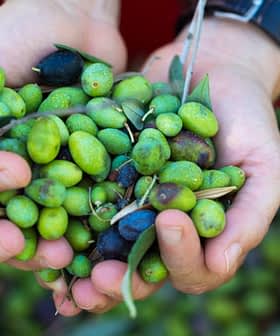Genetic Tweak to Photosynthesis Could Improve Crop Yields
While the tweak has yet to be tested in edible plants, scientists think this could revolutionize the food production -and olive production - industries.
Scientists from the United States Department of Agriculture and the University of Illinois, Urbana have created a genetic “hack” to increase the effectiveness of photosynthesis and boost crop yields by up to 40 percent.
We’ve tried to engineer this shortcut to make them more energy efficient — and in field trials this translated into a 40 percent increase in plant biomass.
The study was done using tobacco plants, but the scientists said that similar techniques could be used in C4 photosynthetic plants. Tobacco is actually a C3 plant, but it photosynthesizes like a C4 plant. Olive trees are C4 plants.
See Also:Olive Oil ResearchThe so-called “hack” works by removing toxins, which are created as byproducts of the photosynthetic process. The plants naturally recycle the toxins, but this requires energy that could otherwise be used toward creating fruit.
“It’s been estimated that in plants like soybeans, rice and fruit and vegetables, [the natural recycling of toxic byproducts caused by photosynthesis] can be a significant drag on yield by as much as 36 percent,” Dr Paul South, the study’s lead author and member of the U.S. Agricultural Research Service, told the BBC.
“We’ve tried to engineer this shortcut to make them more energy efficient — and in field trials this translated into a 40 percent increase in plant biomass,” he added.
Rubisco is the plant protein that is responsible for capturing carbon dioxide and initiating the photosynthetic process. However, during this process, Rubisco captures oxygen instead about 20 percent of the time. These oxygen molecules are then responsible for creating the toxic compound.
Plants have developed their own, natural, methods for detoxification, but the current process uses a lot of energy. Scientists likened the oxygen removal process to driving from Maine to Florida by way of California
In the modified tobacco plants, scientists inserted new genes to shutdown the current method and replace it with a more energy efficient one.
The researchers’ next step will be to replicate the experiment with edible crops, such as tomatoes and soy beans, to determine whether this process has any adverse effects on the safety of the food that is produced.
Based on these results, they will then need to convince the public as well as government regulators that their method is a safe workaround. As a result, the commercial and humanitarian use of these crops could be a ways off.
Dan Flynn, the executive director of the Olive Center at University of California, Davis, told Olive Oil Times that he is unaware of any researchers looking into applications of this technology for olives at the present moment and said it is unlikely to be a field of research at the center as well.
“It is possible that researchers may be experimenting with genetic modification and gene editing somewhere in the world,” he said. “But the California industry is focused on other research priorities so the Olive Center does not anticipate working in this area for the foreseeable future.”
The International Olive Council, which often takes a leading role in research related to olive cultivation and olive oil production, had not commented on the study at the time of publication.








